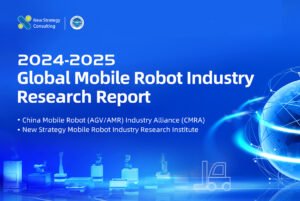According to incomplete statistics from the New Strategy Industry Research Institute, in the first quarter of 2025, there were more than 25 domestic humanoid robot bid winning announcements (excluding small desktop equipment robots for K12 education and base and laboratory engineering construction projects), and the disclosed contract amount exceeded 36 million yuan.
 Some domestic humanoid robot-related bid winning projects in the first quarter of 2025 (collected based on public information, please make a correction if there are any imperfections)
Some domestic humanoid robot-related bid winning projects in the first quarter of 2025 (collected based on public information, please make a correction if there are any imperfections)
Although this data is still small compared to mature fields such as industrial robots, it is representative in the context of emerging technologies just entering the early stage of marketization.
Education and scientific research are still the main battlefield
From the perspective of bidding entities and project uses, humanoid robots still mainly serve educational and scientific research institutions such as universities, research institutes, and vocational colleges, accounting for as much as 84%. Its core uses are concentrated in teaching demonstrations, scientific research training, and the construction of experimental platforms related to embodied intelligence. This shows that the current market’s cognition of humanoid robots is still in the stages of “exploring value” and “building understanding”. Although commercial applications are prevalent, they have not yet been implemented on a large scale.
 The purchase amount is limited, and the product is still in the “trial stage”
The purchase amount is limited, and the product is still in the “trial stage”
From the disclosed accepted contract amount, there are 11 bid winning projects below 1 million yuan, accounting for 44%, and 10 projects above 1 million yuan, accounting for 40%. There have been no large bid winning projects above 10 million yuan in the first quarter. In addition, the number of projects purchased is limited, usually 1-2 robots, used as teaching or display samples. This shows that the purchaser is more exploring in a “small step test” manner, and has not yet formed a batch and systematic procurement demand for humanoid robots.
 The corporate structure is beginning to emerge, and Unitree is ahead
The corporate structure is beginning to emerge, and Unitree is ahead
Among the bid winning companies, Unitree performed particularly well, with more than 5 direct bid winning projects, and the subject matter of some bid winning projects also specified or adopted Unitree’s robots, becoming a well-deserved “Bid Winning King”. This reflects its leading position in product maturity and brand influence in the field of education and scientific research. It can be foreseen that in the short term, manufacturers that can provide relatively stable ontology platforms and have strong openness and secondary development capabilities will have an advantage in the scientific research procurement market.
Market signal: the transition stage from “laboratory” to “industrialization”
Although most of the current bid winning projects are for educational purposes, this batch of orders sends a clear signal: humanoid robots are gradually transitioning from the laboratory concept verification stage to the industrial exploration stage with initial application value. As the education system promotes the basic research and talent training of “artificial intelligence + robots”, the accumulation of embodied intelligence-related talents will accelerate in the future, laying the foundation for commercial implementation.
In the long run, the first investment of the government and the education system will become an important lever to leverage market confidence. Before the formation of large-scale industrial application scenarios, the continuous procurement of education and scientific research institutions will, to a certain extent, support the market space in the early stage of the industry and provide enterprises with a time window for survival and iterative development.
It can be foreseen that with the improvement of product performance, the reduction of costs and the promotion of policies, the next stage of bid winning projects is expected to shift from “single-machine demonstration” to “system deployment”, and further expand to manufacturing, medical, logistics and other industry scenarios. Whether there will be tens of millions of projects in the second quarter of 2025 will become an important indicator for observing the turning point of the industry.





